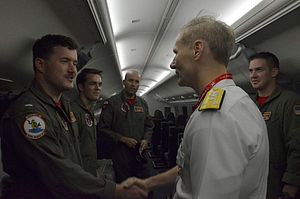This week, Singapore kicks off the latest iteration of its biennial Singapore Airshow. While this year’s airshow is proceeding as planned, it has nonetheless been shrouded by concerns related to the ongoing coronavirus that continues to grip the region.
As I have observed before, the Singapore Airshow, which Singapore has hosted biennially since 2008, is considered Asia’s largest aerospace and defense event of its kind. The last Singapore Airshow was held in 2018 and it featured a range of additional activities since it was also tied to the 50th anniversary of the Royal Singapore Air Force (RSAF).
This year’s iteration of the Singapore Airshow has been clouded by speculation about how it may be affected by the coronavirus scare. Dozens of exhibitors had pulled out of the show, scheduled for February 11 to February 16, as Singapore’s health ministry announced its decision to raise the Disease Outbreak Response System Condition (DORSCON) to orange on February 6, with over 40 cases of infection being confirmed in the Southeast Asian state thus far.
But the Singapore Airshow is nonetheless set to continue this week as scheduled. An announcement issued on February 7 by the organizers noted that the event would continue but that there would be additional measures taken, including seat tagging, apart from preparations made before such as for enhanced cleaning, deployment of teams of doctors and medics for those who need it, and temperature screening. Organizers have also said that they will reduce the number of tickets available for public purchase by more than half, which will lead to a reduction in the 70,000 crowd from last year.
How exactly the coronavirus scare will affect the Singapore Airshow will be clearer as the event actually takes shape, including metrics on attendees that have been spotlighted at previous iterations. Thus far, indications are that despite the withdrawal of certain exhibitors, reductions in some delegations, and increased vigilance, some expected key events – including the performance of the China People’s Liberation Army Air Force aerobatics team despite travel restrictions imposed previously and flying displays of the U.S. F-35B Joint Strike Fighter and the F-22 Raptor – will continue as usual.

































